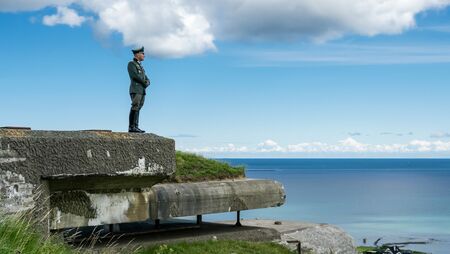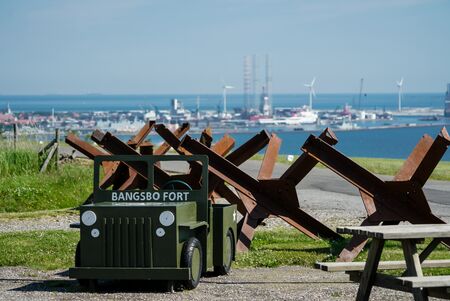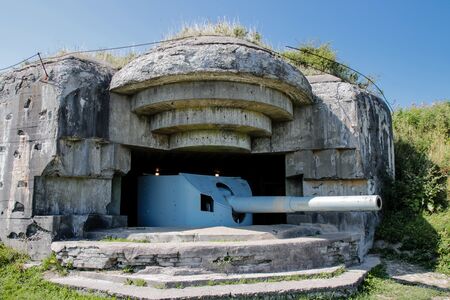Bangsbo Fort is a partially open military area which these years is going through big changes. The fort is placed on a plateau in the hills on the southern outskirts of Frederikshavn. More precisely on Pikkerbakken, one of the many hills formed when the seabed was pushed upwards at the end of the latest glacial age. The hill mostly consists of clay and stone. It is almost 84 metres high. The steep slopes towards the sea and the outstanding nature makes the place unique. The strategic importance of the hill as an observation post dates hundreds of years back. At the occupation of Denmark on April 9 1940 the German Kriegsmarine immediately seized the area for a coastal battery and an antiaircraft battery. Both batteries served to protect the port of Frederikshavn against enemy attacks. The port was important for the Germans as they used it for troop transports to Norway and back. It also served as a base for activities by the Kriegsmarine in Kattegat and Skagerrak.

When the Germans surrendered in May 1945 Stützpunktgruppe Frederikshavn Süd – which was the German name for the area – was a heavily fortified stronghold. A stronghold with 34 thick-walled and 17 light-walled concrete bunkers plus various concrete constructions. The whole area was protected by a three layer barbed wire fence and mine fields. The two batteries were armed with 15cm cannons on the coastal battery and 10.5 cm cannons on the antiaircraft battery. In September 1945 the Danish Navy – or more precisely the Coastal Defense, later changed to the Coastal Fortification - took over the area.
At first they primarily used the installations the Germans had left behind. The area was then expanded with a naval radio station and a coastal radar station. Following a development and an upgrading the area became operational in 1952 under its new name, Bangsbo Fort; now as a Cold War fort. Seen from the perspective of the large investments made at the start of the 1950s the fort had a short life. Already in 1962 it was shut down as a result of a political Defence Agreement. At the same time Naval Base Frederikshavn was put into service. In the area the naval radio station, the coastal radar station and Naval District Kattegat remained.

Today the Navy still controls the 35 hectare area. The southern part Naval District Kattegat – monitoring the Danish waters – is situated in a closed area. The rest - almost 27 hectares – has been desolated since the 1960s and has only to a limited extent been used as a training area.
At the beginning of the 1990s the area was opened to guided tours. Especially the three well-preserved 15cm cannons in the fire bunkers – also called Niels Juel’s cannons – were presented. In 2004 the Navy began a rather large and more permanent opening of the area to the public, including the walking trail Dronningestien. In 2005 Bangsbo Museum moved in and took over the communication activities and the museum activities. In June 2005 the Museum Bunker opened in what was once the command

